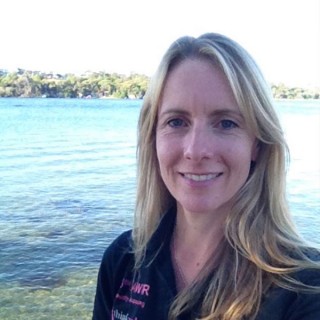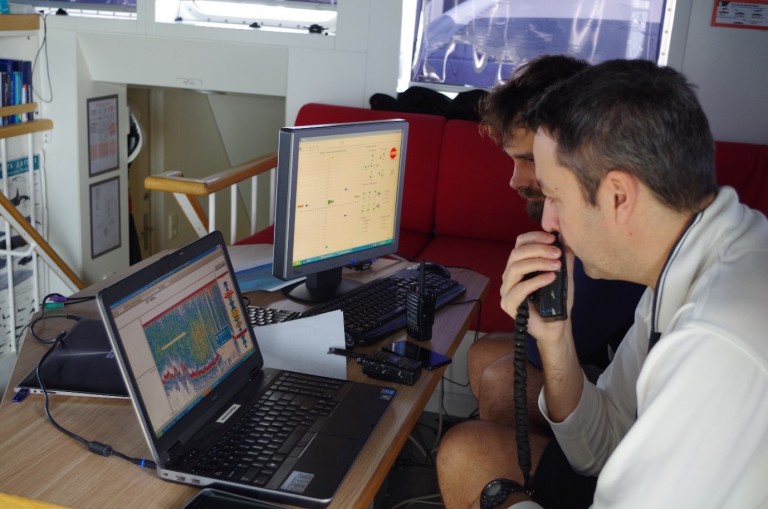
Today was our last day at Scott Reef. While most of the science crew were busy packing the equipment and clearing out the lab a few dedicated scientists and crew worked hard, in less than ideal conditions, to again calibrate the EK60. This acoustic device has been collecting vast amounts of acoustic data detailing objects of all shapes and sizes found in the water column around Scott Reef and the oceanic shoals. It works just like a fish finder and can detect a whole range of objects in the water column from very small objects such as plankton (i.e. small fish and algae) to much larger objects, namely fish.
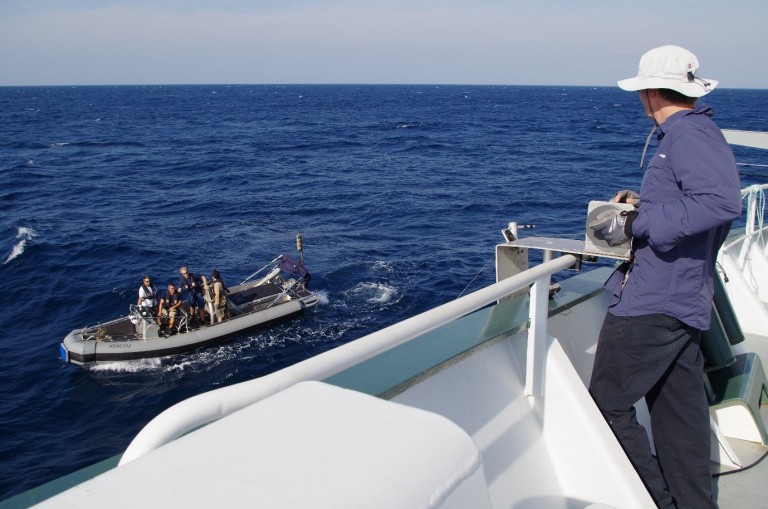
We are particularly interested in productivity associated with upwelling on the oceanic shoals and around Scott Reef. Therefore, calibrating the instrument is an important step in determining the exact size of objects detected. The ball needs to be placed under the EK60 Echosounder which is attached to the bottom of Falkor. This can be a difficult task in the best of weather conditions. Unfortunately today the wind had picked up making the careful maneuvering of our target tungsten carbide ball under the boat more than a little challenging and difficult to detect. It’s the marine equivalent of finding a needing in a haystack.
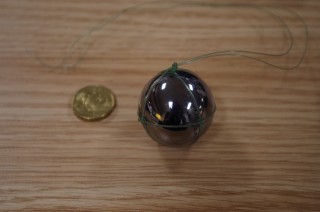
Downloaded, washed, scrubbed and dried
Meanwhile the process of downloading data for all the instruments has continued. With more than 50 instruments deployed this has been a lengthy process. Some of the data from the oceanographic moorings has taken up to 17 hours to download. Now that’s a lot of data! Once downloaded the instruments need to be carefully cleaned and dried before being packed away.
Time to reflect
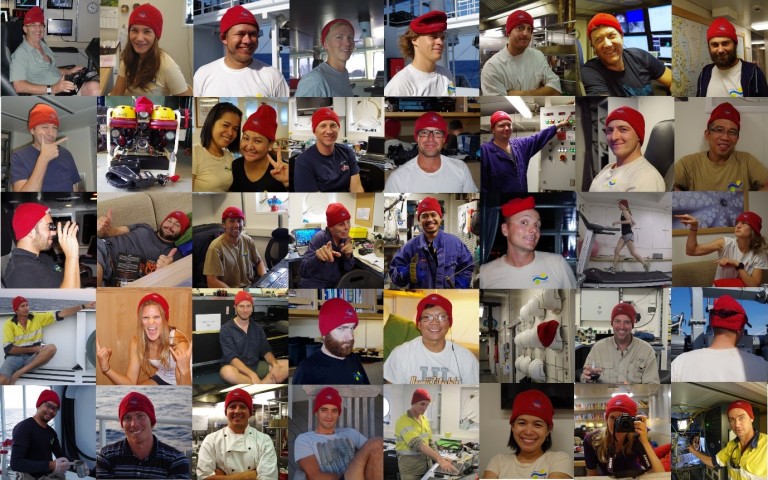
With most of the equipment now down loaded and packed away, scientist and crew are starting to reflect on the research and thinking about the long steam to Darwin (about 50 hours). It’s been a very successful and busy month. This research would not have been possible if it had not been for all the dedicated scientists and crew on board. Things don’t always go to plan, but they were always met with good humor. While a lot of the research and day to day operations can be long and challenging injecting a little humor, courtesy of a red beanie, always helped (see below).
